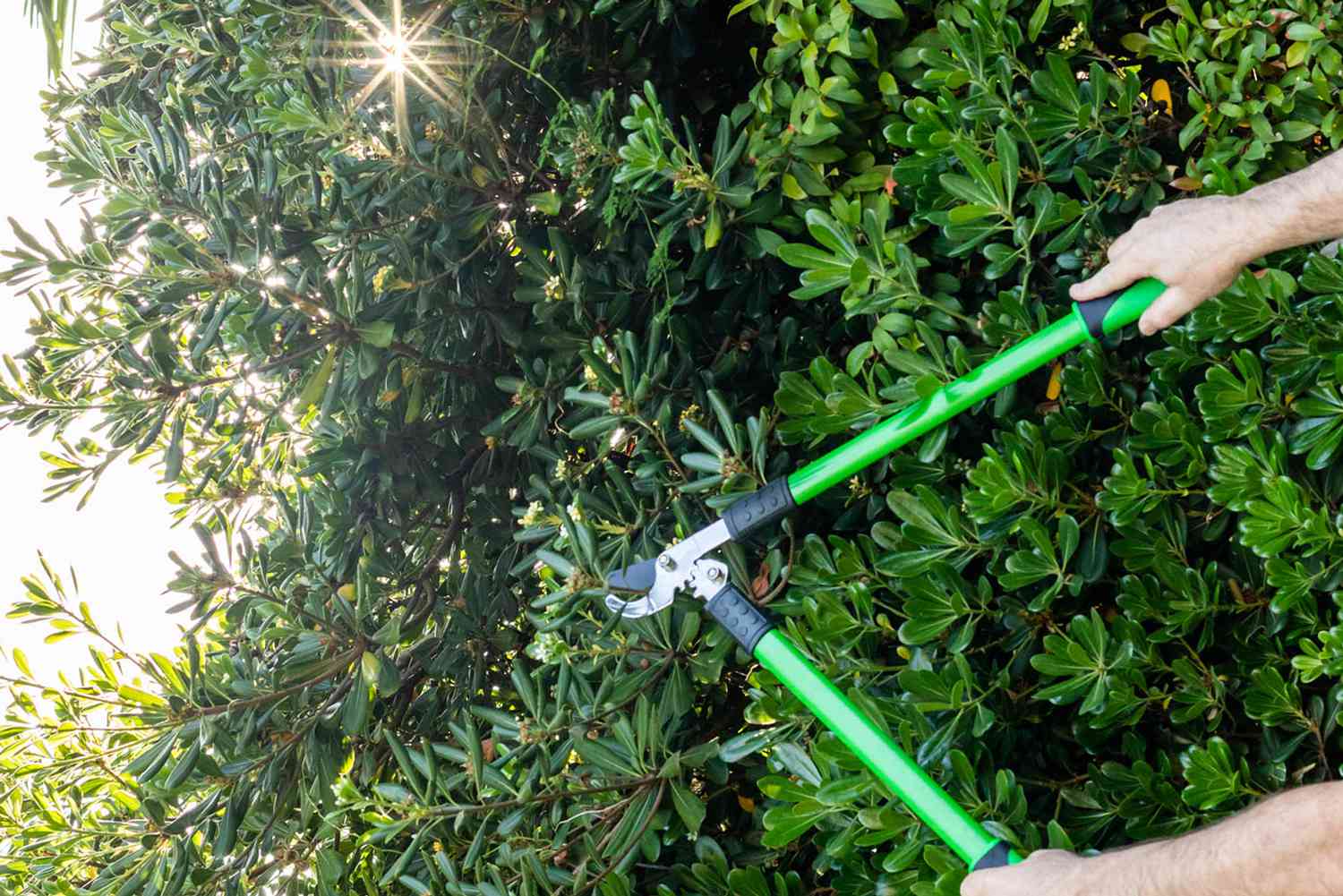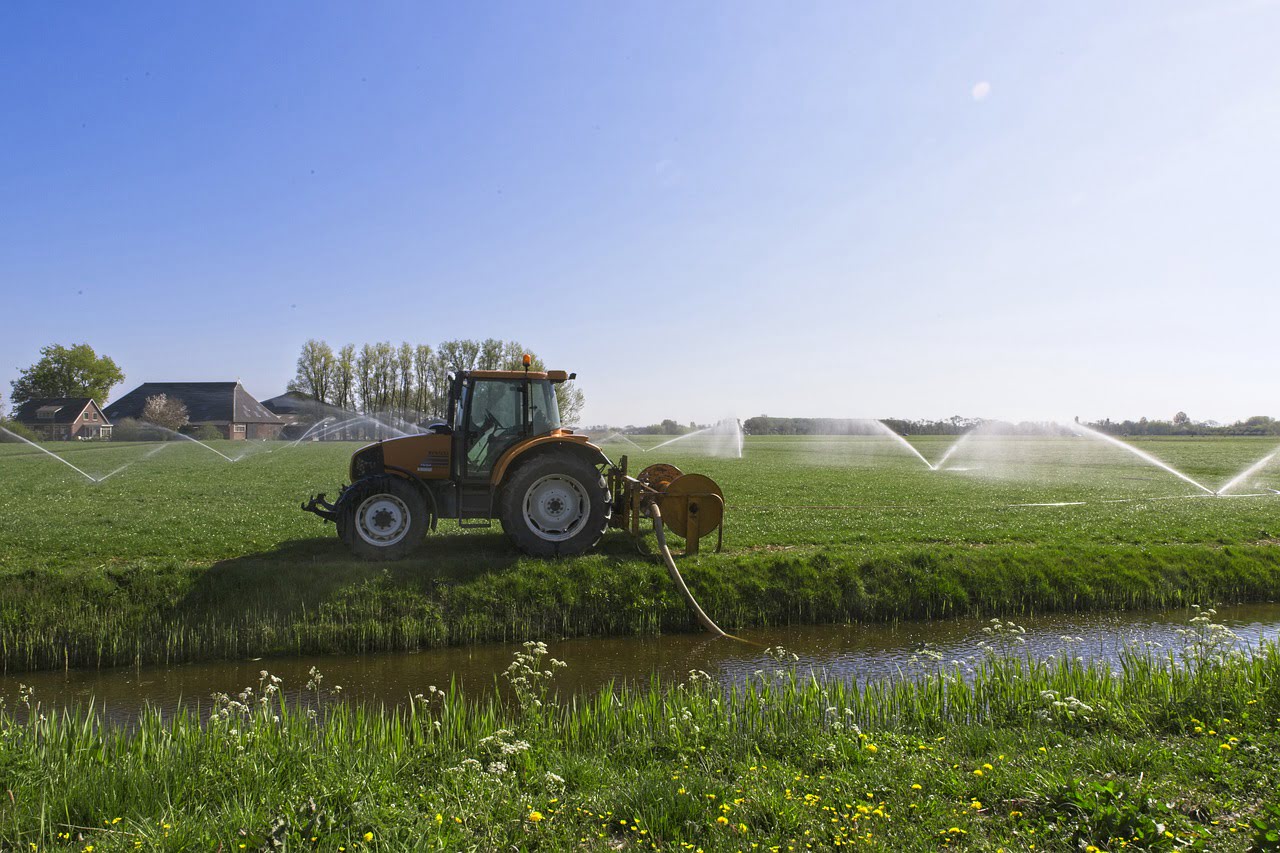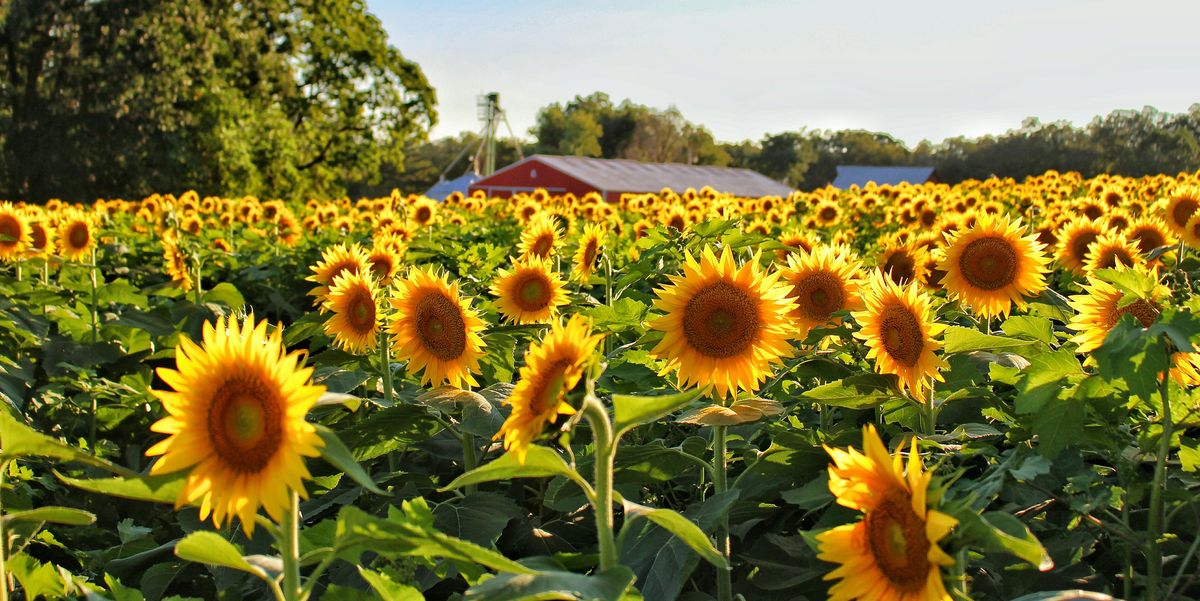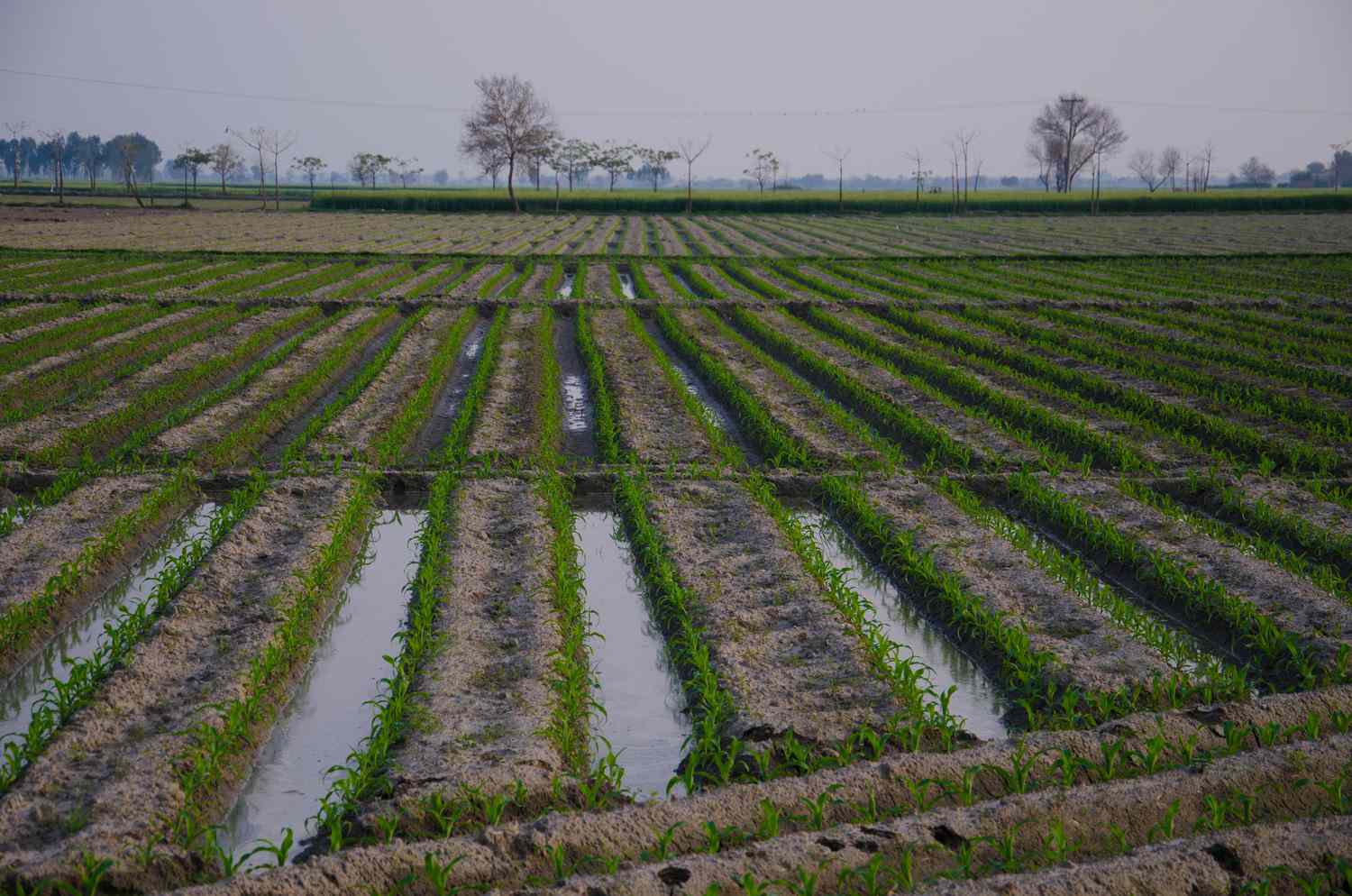Home>Gardening Tips and Tricks>Eco-Friendly Gardening>Why Is Hydroponics Sustainable
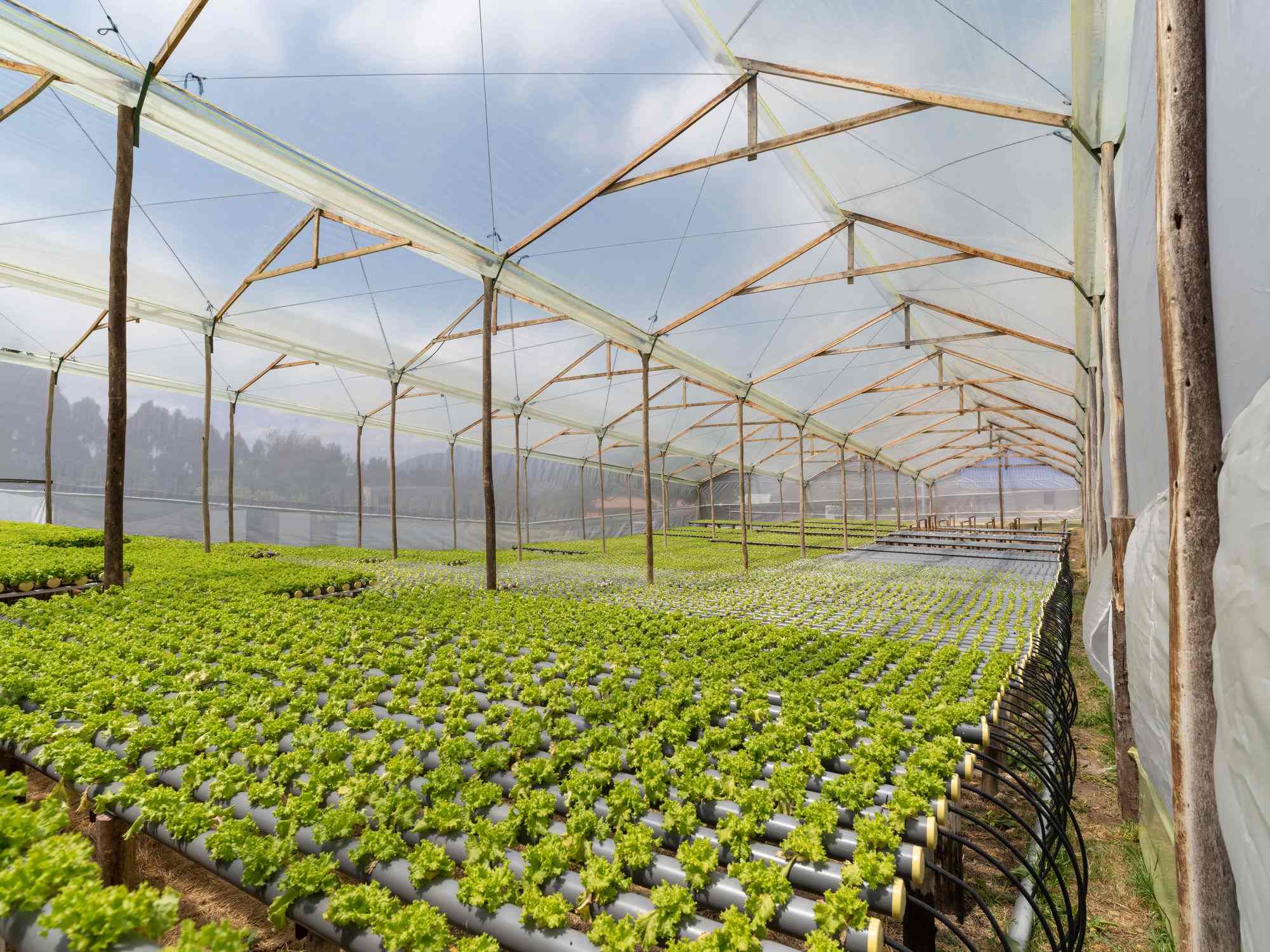

Eco-Friendly Gardening
Why Is Hydroponics Sustainable
Modified: February 10, 2024
Discover the benefits of hydroponics, an eco-friendly gardening method that promotes sustainability and conserves resources. Learn why hydroponics is a popular choice for sustainable gardening enthusiasts.
(Many of the links in this article redirect to a specific reviewed product. Your purchase of these products through affiliate links helps to generate commission for Chicagolandgardening.com, at no extra cost. Learn more)
Table of Contents
- Introduction
- What is Hydroponics?
- Benefits of Hydroponics
- Environmentally Sustainable Aspects of Hydroponics
- Water Conservation in Hydroponics
- Reduced Need for Pesticides and Herbicides
- Efficient Nutrient Utilization in Hydroponics
- Energy Efficiency in Hydroponics
- Economic Sustainability of Hydroponics
- Conclusion
Introduction
Welcome to the world of sustainable gardening! In a time where environmental issues are at the forefront of our global consciousness, it’s more important than ever to explore eco-friendly gardening practices. One such practice gaining popularity is hydroponics. This innovative method of growing plants without soil offers numerous benefits and is considered a key component of sustainable agriculture.
Hydroponics is a system that enables plants to grow in a nutrient-rich water solution, with their roots submerged or suspended in the liquid. Instead of relying on soil, hydroponics utilizes various growing mediums such as perlite, coconut coir, or even air. This combination of controlled environment and nutrient delivery system allows plants to thrive and ensures optimal growth.
The benefits of hydroponics extend far beyond conventional gardening methods. Not only does it maximize space utilization, but it also minimizes water usage and eliminates the need for harmful pesticides and herbicides. These factors make hydroponics an attractive and environmentally sustainable option.
In this article, we will delve deeper into the sustainable aspects of hydroponics and explore how this growing method promotes water conservation, reduces the need for chemicals, optimizes nutrient utilization, and operates with energy efficiency. We will also touch on the economic sustainability of hydroponics and how it ensures long-term viability for gardeners, farmers, and communities.
So, whether you’re a seasoned gardener looking to switch to a more sustainable practice, or you’re embarking on your gardening journey for the first time, hydroponics is worth considering. Let’s dive in and discover how hydroponics holds the key to a greener and more environmentally conscious future.
What is Hydroponics?
Hydroponics is a soilless gardening technique that involves growing plants in a nutrient-rich water solution. In this method, plants are not planted in traditional soil but instead rely on various growing mediums to support their roots. This allows for precise control of the plant’s environment, including nutrient intake, humidity, and temperature.
One of the main advantages of hydroponics is that it eliminates the limitations of soil-based gardening. By bypassing the need for soil, hydroponics opens up new possibilities for growing plants in any environment, regardless of soil quality or availability. This makes it an ideal solution for urban gardening, where space is limited or contaminated soil poses a challenge.
Hydroponic systems can be categorized into different types, including nutrient film technique (NFT), deep water culture (DWC), aeroponics, and drip irrigation systems, among others. Each system has its own set of advantages and may be more suitable for different types of plants or growing conditions.
One of the key principles of hydroponics is the precise delivery of nutrients to the plants. In traditional soil-based gardening, roots must actively search for nutrients in the soil. However, in hydroponics, the plants receive a carefully balanced nutrient solution directly to their roots, resulting in faster growth and higher yields. This controlled nutrient delivery allows for optimal plant growth and reduces the risk of nutrient deficiencies or imbalances.
Moreover, hydroponic systems provide constant access to water for the plants, reducing water waste compared to traditional gardening. The water used in hydroponics is recirculated and reused, minimizing the overall water consumption while still providing plants with the necessary moisture for growth.
Ultimately, hydroponics offers a revolutionary way to grow plants without the limitations of traditional gardening methods. By optimizing nutrient delivery, water usage, and environmental conditions, hydroponics ensures maximum plant growth and productivity while minimizing resource waste.
Benefits of Hydroponics
Hydroponics offers a multitude of benefits over traditional soil-based gardening. From increased crop yields to space efficiency, here are some key advantages of adopting hydroponic gardening:
- Higher Yields: Hydroponics allows for faster growth and higher crop yields compared to traditional gardening. With precise control over nutrient levels, pH, and water delivery, plants can grow up to 30% faster and produce larger, healthier fruits and vegetables.
- Space Efficiency: Hydroponic systems are inherently space-efficient. By eliminating the need for soil, plants can be grown vertically or in compact systems, maximizing the use of available space. This is particularly beneficial for urban gardening or areas with limited land.
- Water Conservation: Hydroponics significantly reduces water usage compared to conventional gardening. The use of recirculating systems allows for water to be reused, minimizing waste. It has been estimated that hydroponics uses up to 90% less water compared to traditional agriculture, making it a sustainable choice for water-conscious environments.
- Year-Round Growing: Hydroponic systems enable year-round growing regardless of weather conditions. By providing an indoor or controlled environment, plants are shielded from seasonal limitations, allowing for continuous production of fresh produce.
- No Soil Contamination: Hydroponics is not limited by soil quality or contamination. Since plants are not grown in soil, the risk of soil-borne diseases, pests, or contaminants is eliminated, resulting in healthier plants and produce.
- Reduced Fertilizer and Chemical Use: The precise nutrient delivery in hydroponics reduces the need for excessive fertilizer and chemical use. The controlled environment minimizes nutrient waste and allows for targeted application, resulting in less runoff and pollution of surrounding ecosystems.
- Energy Efficiency: Hydroponics can be designed to be energy-efficient. By utilizing energy-saving technologies such as LED lighting and efficient water pumps, the energy consumption can be optimized, reducing the overall environmental impact.
- Optimal Plant Growth: With the absence of competing weeds or resource limitations, plants grown in hydroponics can focus their energy on growth and development. This leads to healthier plants with stronger root systems and increased disease resistance.
These benefits make hydroponics a sustainable and efficient choice for gardening, providing a pathway to a more productive and environmentally conscious agricultural future.
Environmentally Sustainable Aspects of Hydroponics
Hydroponics is widely regarded as an environmentally sustainable gardening method. Its various features and practices contribute to the preservation of natural resources and the reduction of ecological impact. Here are some key environmentally sustainable aspects of hydroponics:
- Water Conservation: Water scarcity is a pressing concern around the world, and hydroponics offers a solution to address this challenge. Hydroponic systems use significantly less water compared to traditional soil-based agriculture. The recirculating systems in hydroponics allow for water conservation by reusing the same nutrient-rich water, drastically reducing water waste.
- Reduced Need for Land: Hydroponics maximizes space utilization, making it possible to grow crops in areas with limited available land. With vertical farming and compact systems, hydroponics allows for higher yields in smaller areas. This reduced need for land supports the preservation of natural habitats and reduces deforestation for agricultural purposes.
- Elimination of Soil Erosion: Traditional agriculture often leads to soil erosion due to intensive farming practices. Topsoil, which is crucial for plant growth, can be easily washed away by rain or blown away by wind. In hydroponics, soil erosion is eliminated entirely, as plants are grown in a controlled environment without the need for soil. This ensures that valuable topsoil is conserved and air pollution from dust storms is reduced.
- Minimized Chemical Use: Hydroponics reduces the need for chemical pesticides, herbicides, and fertilizers. With a precise nutrient delivery system and a controlled environment, plants grown hydroponically are less susceptible to pests and diseases. This minimizes the reliance on toxic chemicals, which can be harmful to both the environment and human health.
- Conservation of Nutrients: One of the advantages of hydroponics is the efficient utilization of nutrients. The closed-loop systems in hydroponics ensure that nutrients are utilized by plants more effectively, reducing nutrient runoff and pollution in water sources. This sustainable nutrient management contributes to the preservation of natural ecosystems and water quality.
- Reduced Greenhouse Gas Emissions: Traditional agriculture is a significant contributor to greenhouse gas emissions, primarily through the use of heavy machinery and long transportation distances. Hydroponics, especially when practiced in urban areas or local communities, reduces the need for transportation and heavy machinery. Additionally, hydroponics can integrate renewable energy sources to further reduce carbon emissions.
- Promotion of Biodiversity: Hydroponics can contribute to the conservation of biodiversity. By eliminating the need for pesticides and herbicides, beneficial insects and pollinators can thrive in hydroponic systems. This promotes a healthier ecosystem and the preservation of diverse plant and animal species.
Overall, hydroponics provides environmentally sustainable solutions to many of the challenges faced by traditional agriculture. Through water conservation, reduced chemical use, efficient nutrient utilization, and the preservation of land and biodiversity, hydroponics is paving the way for a greener and more sustainable future.
Water Conservation in Hydroponics
Water scarcity is a global concern, and conventional agriculture is known for its high water consumption. In contrast, hydroponics offers a sustainable solution to this issue with its efficient use of water resources. Here, we will explore how hydroponics promotes water conservation:
Recirculating Systems: One of the key water-saving features of hydroponics is the use of recirculating systems. Instead of continuously supplying fresh water to plants, hydroponic systems recirculate the nutrient solution, reducing water waste. This closed-loop system allows for significant water conservation compared to traditional soil-based agriculture.
Precision Water Delivery: Hydroponic systems enable precise control over water delivery to plants. The water and nutrient solution are delivered directly to the roots, ensuring that plants receive the optimal amount of moisture. This targeted approach eliminates water runoff and minimizes evaporation, further reducing water usage.
Evaporation Reduction: Traditional agricultural practices, such as flood irrigation, often result in significant water loss through evaporation. Hydroponics eliminates this issue by delivering water directly to the roots and avoiding excessive water exposure to the atmosphere. This evaporation reduction contributes to water conservation in hydroponic systems.
Drought Resistance: Hydroponics is inherently resilient to drought conditions. With its efficient water usage, hydroponic plants can withstand dry periods without suffering from water stress. This ability to thrive in drought-like conditions makes hydroponics a valuable solution for regions facing water scarcity or periodic water restrictions.
Nutrient Solution Optimization: Hydroponics maximizes water efficiency by integrating nutrient solutions that are tailored to the specific needs of plants. These solutions contain a balanced mix of essential nutrients, ensuring that plants receive sufficient nourishment without unnecessary water wastage. This targeted approach minimizes nutrient loss and reduces the overall water demand.
Water Recycling: Hydroponic systems have the advantage of capturing and reusing excess water. Any runoff or excess nutrient solution is collected and recycled back into the system, preventing water wastage. This closed-loop approach allows for continuous water reuse and contributes to sustainable water management in hydroponics.
By implementing these water conservation measures, hydroponics significantly reduces overall water consumption in agriculture. It proves to be an environmentally responsible gardening method that addresses water scarcity concerns while ensuring optimal plant growth and productivity.
Reduced Need for Pesticides and Herbicides
Traditional agriculture heavily relies on the use of pesticides and herbicides to control pests and weeds that can damage crops. However, hydroponics offers an alternative approach that minimizes the need for these harmful chemicals. Let’s explore how hydroponics reduces the dependency on pesticides and herbicides:
Controlled Environment: Hydroponic systems provide a controlled environment where plants are grown indoors or in protected structures. This controlled environment helps to create a physical barrier that prevents pests from accessing the plants. By reducing the exposure to pests, hydroponics minimizes the need for pesticides.
Biological Pest Control: Hydroponics integrates biological pest control methods as an eco-friendly alternative to chemical pesticides. Beneficial insects, such as ladybugs and predatory mites, can be introduced into the hydroponic system to naturally control pests. These natural predators prey on common pests like aphids, mites, and thrips, reducing pest populations without the need for synthetic chemicals.
Quarantine Measures: Hydroponic systems can be easily isolated and quarantined if any pest or disease is detected. This isolation prevents the spread of pests and diseases to other plants in the system, reducing the need for widespread use of chemical pesticides. Early detection and prompt action play a key role in maintaining a pest-free hydroponic garden.
Physical Weed Control: Hydroponic systems eliminate the presence of soil, which is a common habitat for weeds. Without soil, weed seeds cannot germinate and grow, significantly reducing the weed pressure. Additionally, physical barriers like mulch or ground covers can be used in hydroponics to suppress weed growth, further minimizing the need for herbicides.
Hygienic Growing Conditions: Proper hygiene practices in hydroponics, such as regular cleaning and sterilization of equipment, help in preventing the buildup of pests and diseases. By maintaining a clean and sanitary environment, hydroponics reduces the risk of pest infestations and diseases, reducing the reliance on chemical pesticides.
Improved Plant Health: Hydroponic systems provide an optimal nutrient-rich environment for plants, ensuring their health and vitality. Healthy plants are less susceptible to pest and disease attacks. By promoting robust growth and strengthened immune systems, hydroponics reduces the vulnerability of plants and reduces the need for pesticide applications.
Overall, the controlled environment, biological pest control methods, and hygienic practices in hydroponics minimize the need for toxic pesticides and herbicides. This not only benefits the environment by reducing chemical pollution but also supports the production of healthier and pesticide-free food.
Efficient Nutrient Utilization in Hydroponics
One of the key advantages of hydroponics is its efficient utilization of nutrients. Unlike traditional soil-based gardening, which relies on natural soil composition and organic matter for nutrient availability, hydroponics provides precise control over nutrient delivery. Let’s explore how hydroponics optimizes nutrient utilization:
Targeted Nutrient Delivery: In hydroponics, nutrient solutions are specifically formulated to meet the needs of each plant. These solutions contain a balanced mix of essential nutrients, providing plants with the precise amounts required for optimal growth. This targeted nutrient delivery ensures that plants receive all the necessary nutrients for healthy development, eliminating deficiencies or imbalances.
Optimal Nutrient Uptake: In traditional gardening, plants must allocate energy towards root growth and nutrient absorption. In contrast, hydroponic plants have easier access to nutrients as they are readily available in the surrounding water solution. This direct access allows plants to uptake nutrients more efficiently, utilizing them promptly for growth and development.
Reduced Nutrient Waste: Hydroponic systems minimize nutrient wastage by recirculating the nutrient solution. Any excess nutrient solution not taken up by plants is collected, filtered, and reintroduced into the system. This closed-loop approach ensures that nutrients are continuously available to plants, minimizing nutrient runoff and environmental pollution associated with conventional agriculture.
pH and EC Management: Hydroponic systems allow for precise control over pH levels and electrical conductivity (EC) of the nutrient solution. Maintaining the ideal pH range for specific plants optimizes nutrient availability and absorption. Similarly, monitoring and adjusting EC levels ensure that plants receive the appropriate amount of nutrients without over- or under-fertilization.
Individually Tailored Nutrient Solutions: Each plant species has unique nutrient requirements. Hydroponics allows gardeners to customize nutrient solutions based on the specific needs of the plants being grown. This individualized approach ensures that plants receive the ideal nutrient composition for their growth stage, resulting in improved nutrient uptake and utilization.
Minimized Nutrient Loss: In traditional gardening, nutrients applied to the soil can be lost through leaching or fixation, reducing their availability to plants. Hydroponics mitigates these losses as the nutrient solutions are delivered directly to the roots. This reduces leaching and maximizes nutrient uptake, resulting in more efficient nutrient utilization.
Improved Plant Health and Quality: By providing plants with the precise nutrients they need, hydroponics promotes healthier and more vigorous plant growth. This leads to improved plant health, increased disease resistance, and higher quality produce. The optimized nutrient utilization in hydroponics ensures that plants receive all the essential elements required for their optimal development.
Through targeted nutrient delivery, reduced waste, and individual customization, hydroponics optimizes the utilization of nutrients, resulting in healthier and more productive plants. This efficient nutrient utilization is a key component of hydroponics’ success as a sustainable and high-yielding gardening method.
Energy Efficiency in Hydroponics
Energy efficiency is a critical aspect of sustainable agriculture, and hydroponics offers several features that contribute to reduced energy consumption. Let’s explore how hydroponics promotes energy efficiency:
LED Lighting: Indoor hydroponic systems often rely on artificial lighting to provide plants with the necessary light for photosynthesis. LED (Light Emitting Diode) lights are a popular choice in hydroponics due to their energy efficiency. LED lights consume less energy than traditional lighting options while still providing the specific light spectrum needed for plant growth, resulting in significant energy savings.
Energy-Saving Equipment: Hydroponic systems can be designed with energy-efficient equipment at their core. Water pumps, fans, and ventilation systems can be optimized for minimal energy usage while still maintaining optimal growing conditions. By selecting energy-saving options, hydroponics contributes to overall energy efficiency in agriculture.
Climate Control Management: Hydroponic systems provide precise control over environmental conditions, including temperature, humidity, and CO2 levels. By carefully monitoring and regulating these elements, hydroponics ensures that energy is not wasted on unnecessary heating, cooling, or dehumidification. This targeted climate control optimization minimizes energy consumption in maintaining the ideal growing conditions.
Reduced Transportation: Hydroponic gardens can be set up in various locations, including urban centers, reducing the need for long-distance transportation of produce. By growing food closer to consumers, hydroponics reduces the energy required for transportation and the associated greenhouse gas emissions.
Closed-Loop Systems: Hydroponics utilizes closed-loop systems where water and nutrients are recirculated. By recycling and reusing the water and nutrient solutions, hydroponics minimizes the need for energy-intensive irrigation and fertilization practices associated with traditional agriculture.
Integration of Renewable Energy: Hydroponics has the potential to be integrated with renewable energy sources. Solar panels, wind turbines, or other renewable energy systems can power the artificial lighting and other energy-consuming components of hydroponic operations. By utilizing renewable energy, the environmental impact is further reduced, making hydroponics an even more sustainable and energy-efficient choice.
Year-Round Production: Hydroponics enables year-round production regardless of seasonal limitations. With controlled environment systems, such as greenhouses or indoor grow rooms, hydroponics allows for continuous crop production. This eliminates the need for energy-intensive climate manipulation required in traditional agriculture during non-growing seasons.
By incorporating energy-efficient practices such as LED lighting, optimized equipment, climate control management, and renewable energy sources, hydroponics helps to minimize energy consumption in agriculture. This enhances the overall sustainability of the gardening method and aligns with the goals of reducing ecological impact and promoting a greener future.
Economic Sustainability of Hydroponics
Hydroponics not only offers environmental benefits but also demonstrates economic sustainability. This modern growing technique brings various advantages that contribute to the long-term viability and profitability of hydroponic operations. Here are some key aspects of the economic sustainability of hydroponics:
Higher Yield and Revenue Potential: Hydroponics allows for faster growth and higher crop yields compared to traditional soil-based agriculture. The controlled environment and optimal nutrient delivery result in healthier plants and increased productivity. With higher yields, hydroponic growers can generate more revenue from their harvests.
Maximized Space Utilization: Hydroponics employs vertical farming and compact systems, maximizing land utilization. This is particularly advantageous in urban areas or regions with limited available land. By utilizing space efficiently, hydroponic operations can maximize output and profit potential, even in small areas.
Year-Round Production: Hydroponics is not constrained by seasonal limitations. With indoor or controlled environment systems, hydroponic growers can produce crops year-round. This continuous production provides a consistent supply of fresh produce, which can be advantageous in meeting market demand and maintaining a reliable income stream.
Reduced Water and Resource Costs: Hydroponics significantly reduces water usage compared to traditional agriculture. By recirculating and reusing water, hydroponic operations can lower water costs, resulting in long-term savings. Additionally, the controlled environment and optimized nutrient utilization in hydroponics contribute to reduced fertilizer and resource costs.
Increase in Crop Diversity and Marketability: Hydroponics enables the growth of a wide range of crops, including niche or high-value varieties that may not be viable in certain climates or soil conditions. This diversification of crops expands market opportunities and potentially increases profitability by catering to specific consumer demands.
Quality Assurance and Reduced Waste: Hydroponic systems provide precise control over growing conditions, resulting in consistently high-quality produce. This quality assurance helps build consumer trust and can lead to premium pricing. Additionally, by eliminating soil-borne diseases and pests, hydroponics reduces crop loss due to contamination or damage, minimizing waste and maximizing profits.
Local and Sustainable Food Production: Hydroponics can be implemented in urban areas, bringing food production closer to consumers. This local production contributes to the development of resilient food systems, reduces transportation costs, and promotes sustainable agriculture practices. Moreover, it supports local economies by creating jobs and fostering community engagement.
Technological Advancements: Ongoing advancements in hydroponic technology and automation are making it more cost-effective and efficient. As technology continues to improve, the initial investment costs associated with hydroponics are becoming more affordable, making it increasingly accessible to a broader range of growers.
By offering increased yield potential, reduced resource costs, year-round production, and market diversification, hydroponics provides economic sustainability to growers. It allows for the cultivation of high-quality produce, maximizes revenue potential, and supports local and sustainable food production, contributing to long-term profitability and success in the agricultural industry.
Conclusion
Hydroponics represents a dynamic and sustainable approach to gardening that addresses the pressing environmental and economic challenges of our time. Through its soilless system, hydroponics offers numerous benefits that contribute to a greener and more efficient agricultural future.
From conserving water to reducing reliance on pesticides and herbicides, hydroponics promotes environmental sustainability. The closed-loop systems minimize water usage, reduce the need for chemical inputs, and optimize nutrient utilization. By eliminating soil erosion and promoting biodiversity, hydroponics safeguards the health of our ecosystems.
Moreover, hydroponics demonstrates economic sustainability by increasing productivity and revenue potential. With higher crop yields, efficient land utilization, and year-round production, hydroponic growers can maximize profit while catering to market demands. The reduced resource costs, quality assurance, and market diversification enable economic viability and stability in the long term.
Furthermore, hydroponics fosters local and sustainable food production. By bringing agriculture closer to urban areas and utilizing technology advancements, hydroponics promotes self-sufficiency, job creation, and community engagement. It reduces carbon emissions by minimizing transportation distances and contributes to the development of resilient food systems.
As we navigate the challenges of a growing global population and a changing climate, hydroponics provides a viable solution to create a more sustainable and productive food system. Its innovative and efficient practices allow us to grow more food, conserve resources, minimize environmental impact, and support local communities.
Whether you are a seasoned gardener or just starting on your gardening journey, hydroponics offers an exciting and rewarding way to cultivate plants in an eco-friendly and economically viable manner. By embracing hydroponics, we can contribute to a healthier planet, a more secure food supply, and a sustainable future for generations to come.

